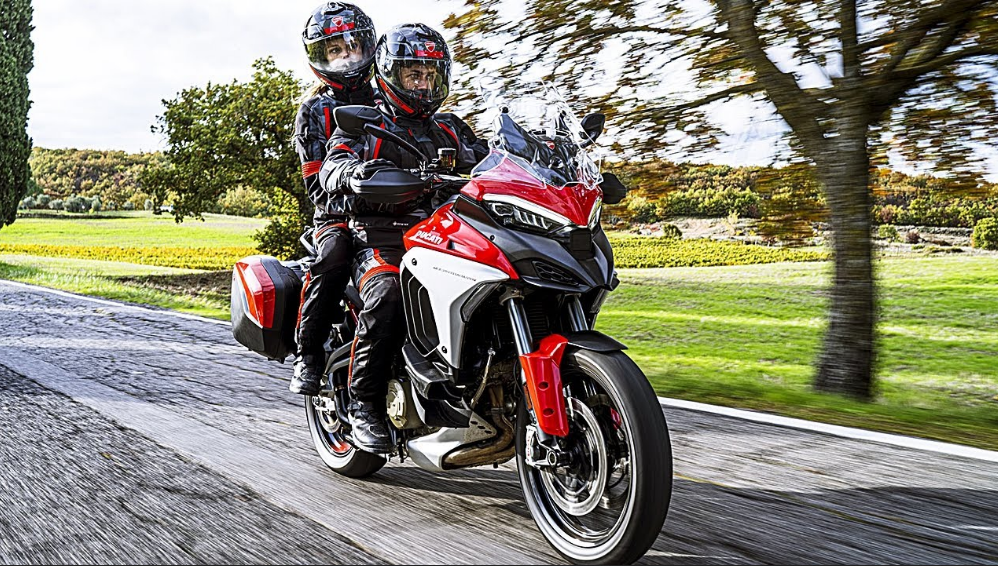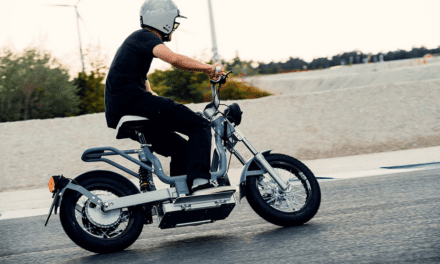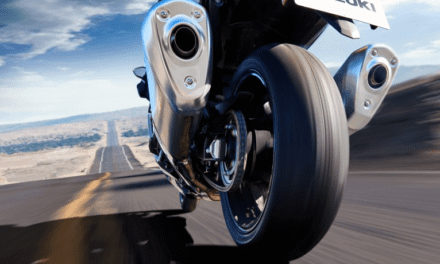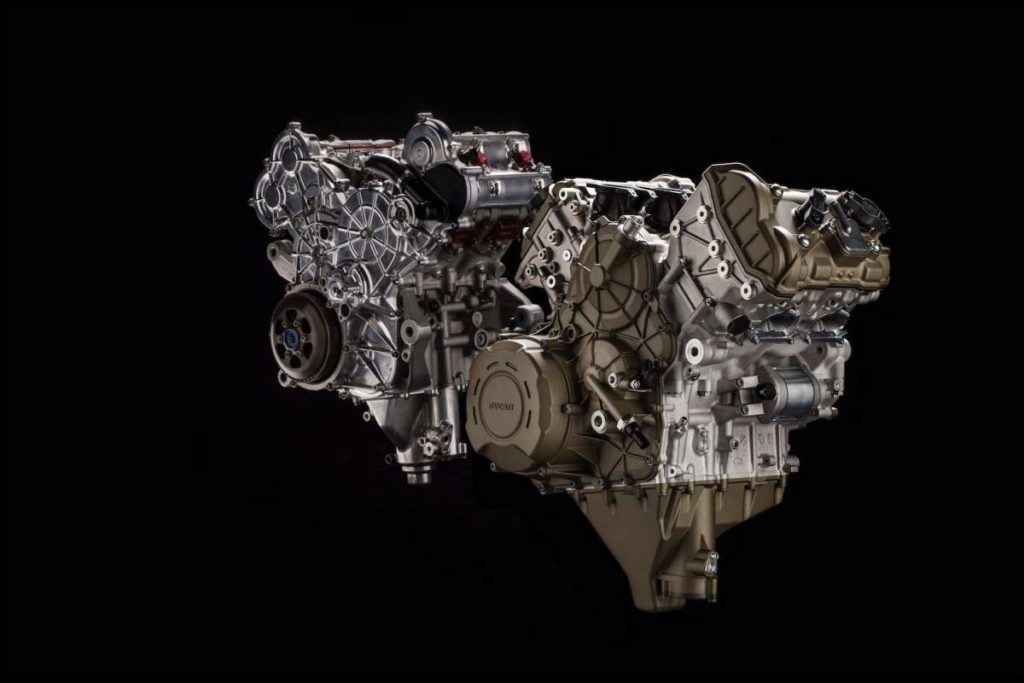
Production of the Multistrada V4 has now begun at the Ducati factory in Borgo Panigale, Italy’s answer to Ballymount. This will be the first motorcycle to use front and rear radar technology. The new machine marks an significant turning point for the Bologna-based motorcycle manufacturer and will be officially presented to the world in early November.
For the fourth generation of the Multistrada, Ducati has developed a new, light and compact V4 engine, designed to meet the needs required for “adventuring” use without neglecting all that wonderful emotion and sportiness. The complete redesign made it possible to reach record-breaking maintenance intervals for the world of two wheels. This new engine promises to be a game changer and the tracing the tech back to MotoGP wouldn’t take a genius! The new bike will be unveiled in early November. The new motor is an extremely compact, lightweight, high-performance, torque-rich engine that has been designed to meet the needs required in “adventouring” use without neglecting any of the emotion and sportiness that we associate with the brand.
Built with latest-generation technology as well as first-in-class materials available, in order to guarantee both durability and reliability, the V4 Granturismo stands out for its record-braking maintenance intervals for a motorcycle engine. Every single technical choice made during the development of this project has the aim of ensuring maximum fluidity of operation combined with a substantial extension of maintenance intervals.
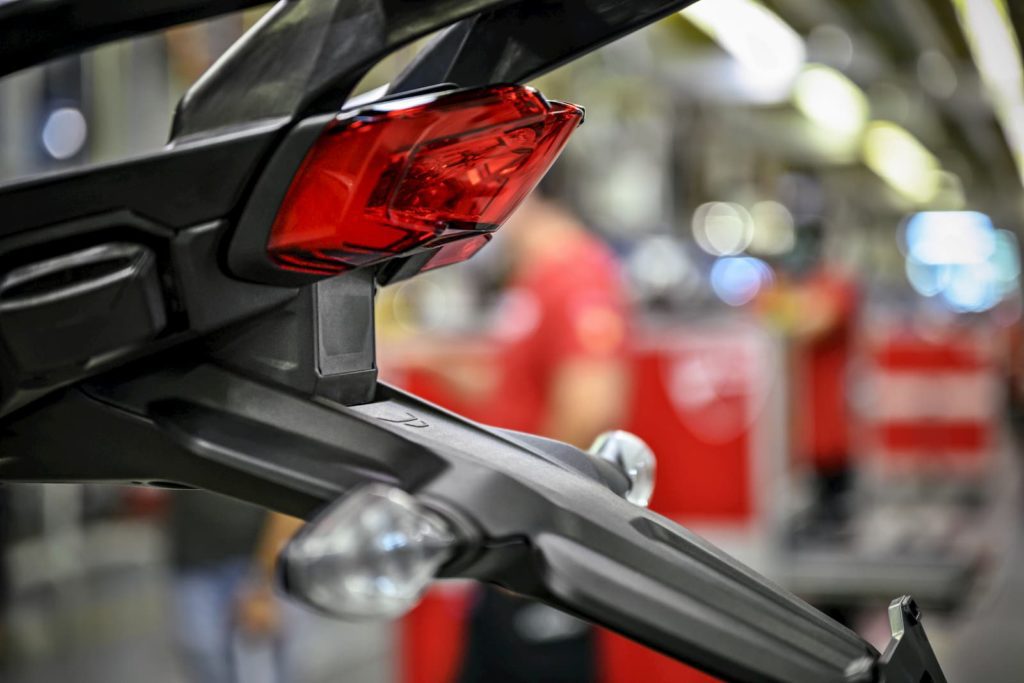
The new distribution includes a spring valve return system, that brings the maintenance intervals of the V4 Granturismo up to a staggering 60,000 km. This figure is obtained thanks to the in-depth expertise Ducati acquired in the use of materials, treatments and technical solutions developed around the Desmodromic system. All this, applied to a spring valve return system which puts less stress on the components if compared to the Desmo, sets an outstanding milestone never set before by a motorcycle engine.
In addition, the engine works better when operating at low revs and low loads, without compromising the outright performance. This means that it has the power at high revs and the reach of an authentic sports engine: The new V4 Granturismo will deliver 170 hp at 10,500 rpm, and a maximum torque of 125 Nm at only 8,750 rpm. It’ll do all of this while still respecting the stringent Euro 5 homologation norms.
Tipping the scales at only 66.7 kg, the V4 Granturismo is being 1.2 kg lighter than the Testastretta twin-cylinder used on the previous Multistrada 1260. The 1,158 cc displacement came out as being the perfect point of connection in terms of performance, lightness and dimension of a V4 engine. Compared to the previous generation engine, the V4 Granturismo results 85mm shorter, 95mm lower and only 20mm wider. This compact layout allowed Ducati engineers to house the engine in the frame more effectively and centrally in order to positively influence the position of the bike’s center of gravity, with all the resulting benefits.
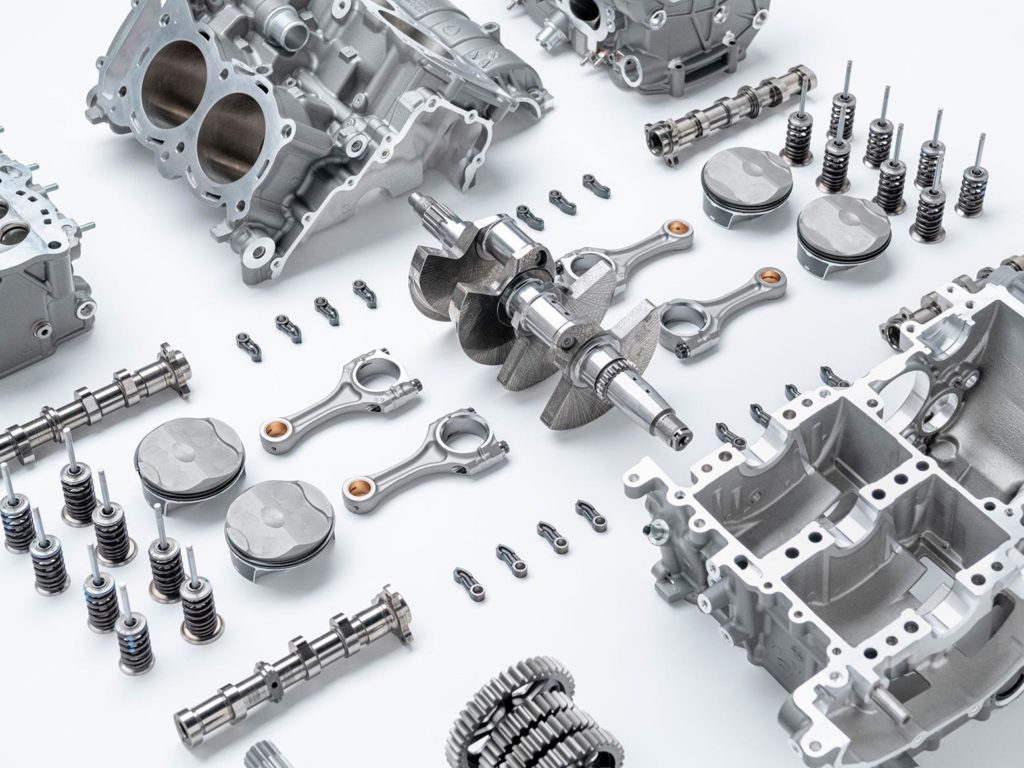
It also inherits some elements derived from the experience gained by Ducati in the racing world, such as the decision to adopt a counter-rotating crankshaft, which improves the handling and agility of the bike, and to exploit the “Twin Pulse” technology, capable of offering a full-bodied but perfectly manageable power delivery at every speed.
To avoid a drop in thermal comfort due to the heat transmitted by the rear cylinders, it deactivates the rear bank at idle. In this way, when the bike is stationary, the combustion process in the cylinders is halted and this improves the thermal comfort of the rider and passenger thanks to the lowering of temperatures while simultaneously reducing fuel consumption. Very clever indeed.
What’s equally interesting is that Ducati have now brought radars onto production bikes. The adoption of these systems promises to be a true revolution for the world of two wheels,
marking a new level of excellence in terms of comfort and riding assistance. This will be especially true on long motorway journeys.
Radars are advanced rider aid systems capable of supporting and making riding more comfortable thanks to the ability to reconstruct the reality surrounding the motorcycle. Ducati’s interest in this type of systems dates back to 2016, when they worked in collaboration with the Department of Electronics, Information and Bioengineering of the Politecnico di Milano to experiment with these types of systems.
This first experience has confirmed the applicability of this kind of technology to vehicles on two wheels, and has pushed Ducati to the creation of a complete package of riding assistance using two radars that, within four years, have been developed and produced in close cooperation with Bosch, a top-level technology partner, and sees its first application on the new Multistrada V4. Bosch are the same people who gave us that cornering ABS a few years ago.
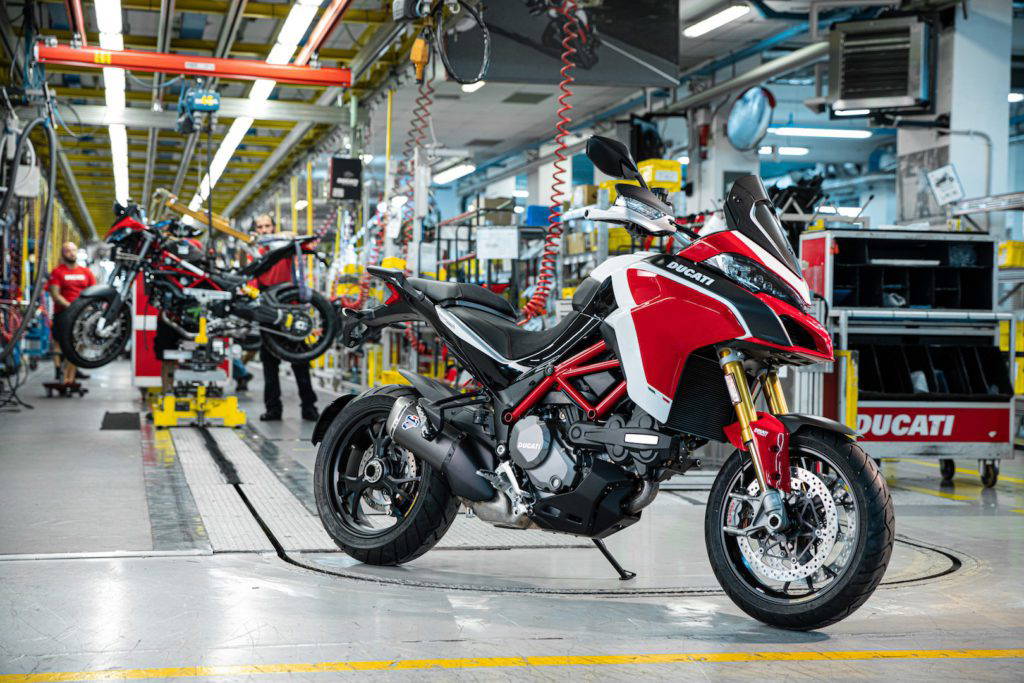
Each radar has compact dimensions. They are small, only 70 x 60 x 28 mm, which is similar to a modern action camera. They also integrate perfectly into the bike, weighing in at only 190 grams.
The radar positioned in the front of the vehicle controls the operation of the Adaptive Cruise Control (ACC). This piece of cleverness works by means of controlled braking and acceleration and automatically adjusts the distance, which is selectable on four levels, from other vehicles when riding at a speed between 30 and 160 km/h.
Some of the older people in the office have used this car-derived system in bigger BMW cars over the years. Now it has been evolved and developed according to the dynamics and ergonomics of a two-wheeled vehicle. In particular, the authority that the system has in terms of deceleration and acceleration has been limited and tuned for motorcycles in order to ensure the rider can maintain constant control of the vehicle in any situation. The system allows for more comfortable riding, especially on long motorway journeys.
The rear radar, on the other hand, is able to detect and report vehicles positioned in our spot, that is the area not visible either directly by the rider or through the mirror. The Blind Spot Detection (BSD) system also signals the approaching from behind of vehicles at high speed.
To underline the technical and scientific value of the research project, which has been carried out jointly by Ducati engineers along with researchers and undergraduates from the Politecnico di Milano, a patent application relating to the control algorithms of this system was filed back in May 2017. Following this, in June 2017, a scientific publication was presented at the Intelligent Vehicles Symposium in Redondo Beach, California.
It’s important to note that adaptive intelligent systems are an aid to the vehicle rider’s riding and must always be checked or corrected by the rider. Advanced systems are definitely not autonomous riding systems and therefore do not and cannot replace the rider. Always attentive to safety on the road and on the track, Ducati reminds that the rider is and remains responsible for riding and must always maintain a prudent behaviour that is appropriate to the specific environmental context.
It’s important to remember that as with all safety equipment and features the new radar system on the Multistrada is designed to complement good riding and not to substitute it! To find out more about this new system and the new bike it will be featured on give Declan, at Rosso Ducati, a call on 01 464 2211.

